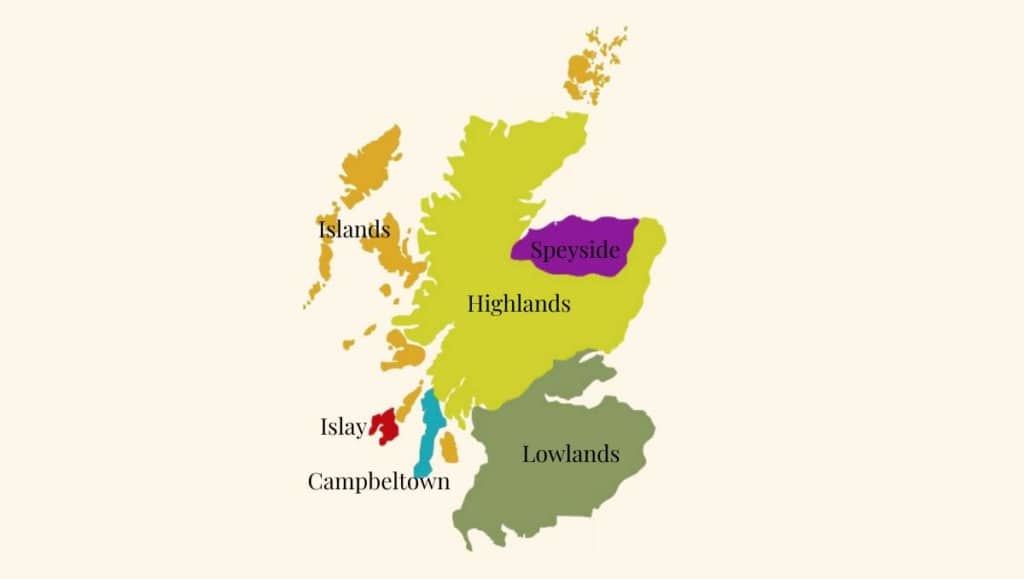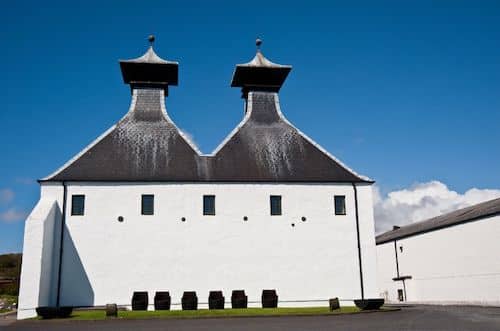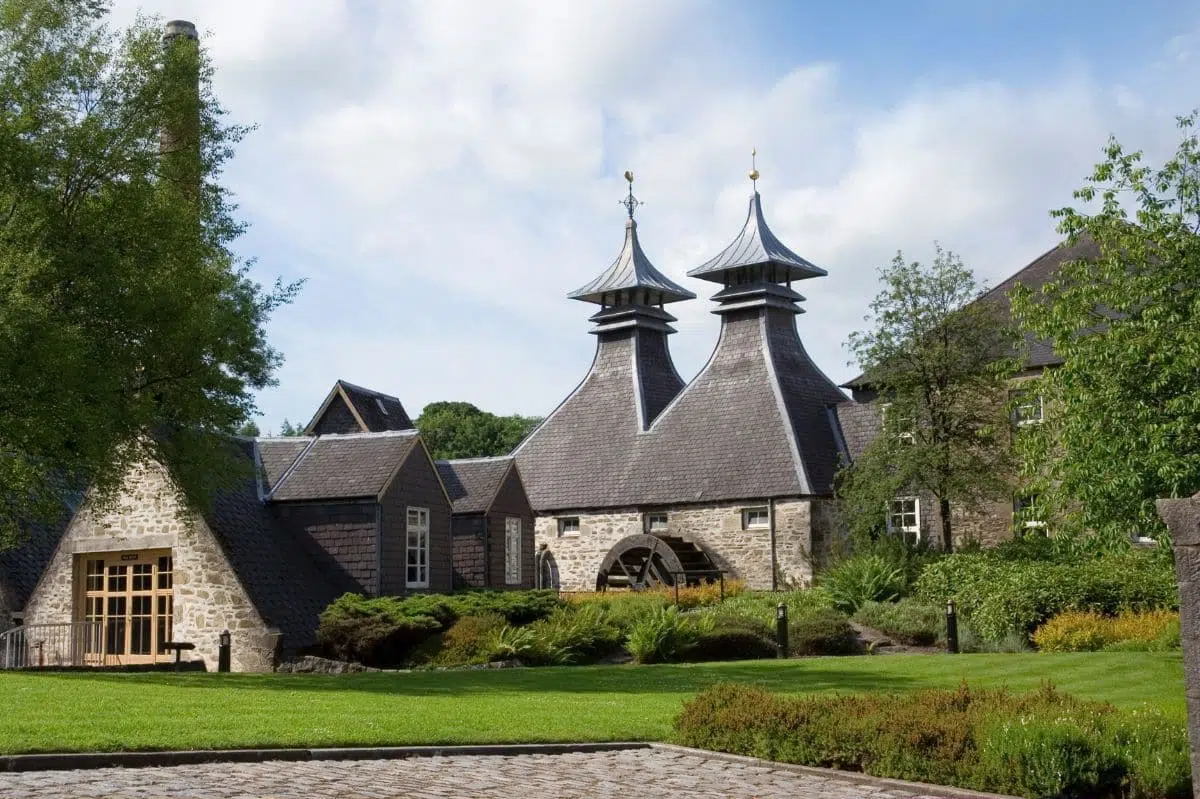As the name suggests, Scotch is a special kind of whiskey that can only be produced in Scotland. - In one of the 5 (+1) Scotch-producing regions, to be precise, with each standing for particular flavors and styles of Scotch Whisky.
These recognized Scotch regions are
- Speyside
- Islay
- Highlands
- Lowlands
- and Campbeltown.
Besides those, there is one more unofficial region: the Islands.
So let's get into the details - and don't confuse these styles with the different Scotch types, which give you information about the mash bill, the production, and the blend instead.
The Whisky Regions in Scotland
Of all the Scotch-producing districts, Speyside is by far the most important one, so we start with that:

Speyside
Speyside is located in the northeastern part of Scotland and originally was a subregion of the Highlands. However, due to the high density of distilleries, it's now a separate region.
It is home to more than 60 distilleries, which equals more than 50% of the country's total - both, in terms of facilities and production volume.
Generally, it is known for its sweeter Single Malt Scotch with only a little peat. Typical flavors include apple, vanilla, oak, and dried fruit.
Speyside has also brought up some of the most renowned Scotch brands in the world, such as Glenfiddich, Macallan, Dalwhinnie, Glenlivet, and Glenfiddich.
Highlands
Geographically, the Highlands is the largest whisky-producing area in Scotland, and it encompasses more than 25 distilleries, which make up another 25% of the country's whisky production.
Because it is such a large area, it is divided into four sub-areas North, East, South, and West. Each of these areas has its very own characteristic flavor.
The most influential distilleries in these regions are:
- North: Glenmorangie & Dalmore
- East: Glendronach
- South: Aberfeldy
- West: Oban
Highland Whiskies are famous for flavors like fruit cake, malt, heather, and smoke. Especially Dalmore and Glenmorangie are known for their excellent, full-bodied Single Malt Whisky.
The northern part is famous for the bold Single Malt Scotch. Scotch from the eastern Highlands is usually milder and more fruity in taste.
The southern part produces similarly fruity Scotches with an even lighter body. And finally, the western part is known for its peated Single Malts with Oban being the most popular brand representing it.
Lowlands
The Lowlands are the second largest area to produce Scotch Whisky. Yet, is home to only five distilleries.
Scotch from the Lowlands is known to be mild in taste with no peaty flavors. Instead, Lowland Whisky contains flavors like toffee, cream, honeysuckle, and cinnamon.
The most popular brands producing Scotch in the Lowlands are Auchentoshan and Glenkinchie.
Islay
Islay Scotch is best known for its smoky flavor and hints of saltiness. The region is located just west of the Scottish mainland and is the smallest region to produce Scotch.
However, Islay Scotch is world-renowned and home to some of the most famous brands like Ardbeg, Lagavulin, and Laphroaig.

All the above are known for producing excellent peated Single Malts with a typical Islay touch. So expect some seriously smoky notes from Islay Scotch.
All the above are known for producing excellent peated Single Malts with a typical Islay touch. The high level of smoke in the flavor profile makes Islay Scotch not the most approachable for whisky beginners. If you want to get you used to it slowly, try mixing it in Scotch cocktails to mute the peaty flavors slightly.
Campbeltown
Campbeltown once was a thriving whisky-producing area counting more than 30 Whisky distilleries. But these times are long gone, and today, you will only find three left:
One is Glengyle, bottling their whisky under the label Kilkerran, Glen Scotia, and Springbank.
Campbeltown Whisky is known for its dryness and flavors like brine, toffee, vanilla, and dried fruit.
Scotch Whisky from the Islands
Besides these five official regions, there are various small islands harboring distilleries.
The Islands are enormously diverse but not an area recognized by the Scotch Whisky Association. Still, they are home to some famous Scotch brands.
For instance, Talisker (Isle of Skye), Highland Park (Orkney), and Jura (Isle of Jura) are each located on one of these over 800 small islands.
More about Scotch
Scotch Whisky is a distilled spirit that must contain malted barley. Some types are made from 100% barley, while others include additional grains.
Scotch differs from other types of whiskey in its mash bill, the country of origin, the flavor - often quite peaty- and the spelling. You may have noticed that Scotch Whisky is spelled without the e - read more on the reasons behind that in our article on whisky vs. whiskey.
Further noteworthy is that there are five different types of Scotch: Single Malt, Single Grain, Blended Malt, Blended Grain, and Blended Scotch. This classification tells you about the mash bill (malt or grain), the blending type, and they indicate the production process.

